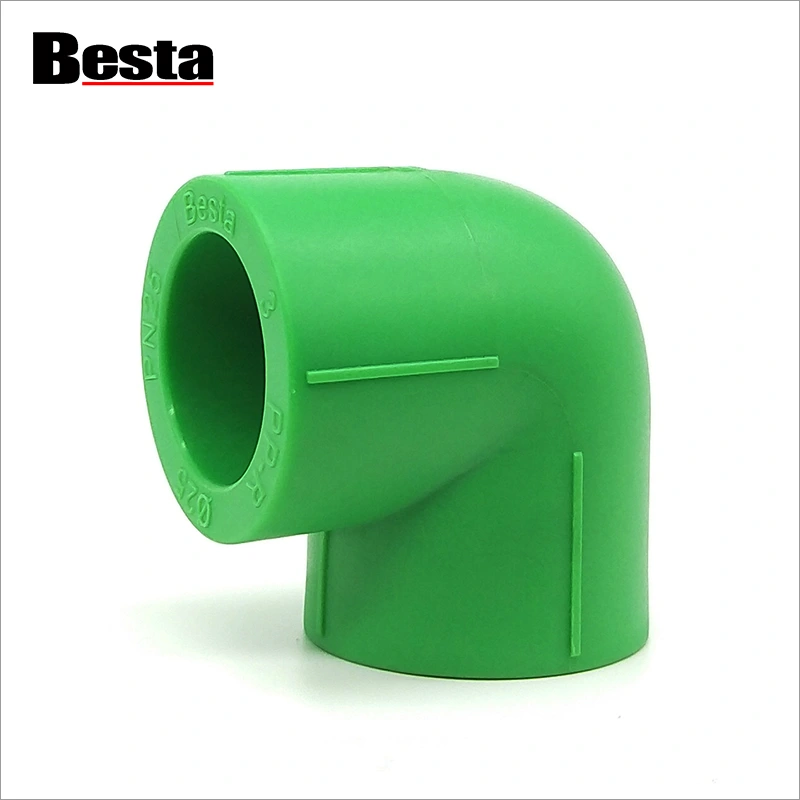Introduction to PPR Pipe Fittings in Industrial Applications
2024-05-30
Introduction to PPR Pipe Fittings in Industrial Applications

Polypropylene Random Copolymer (PPR) pipe fittings are increasingly popular in industrial applications due to their robustness, reliability, and versatility. PPR pipes and fittings are constructed from a type of plastic known as random copolymer polypropylene, which provides numerous advantages over traditional piping materials like metal or PVC.
Key Characteristics of PPR Pipe Fittings
1. Durability: PPR pipe fittings are known for their long service life, often exceeding 50 years under normal operating conditions. They are resistant to impact, wear, and mechanical damage.
2. Corrosion Resistance: Unlike metal pipes, PPR fittings are immune to corrosion, making them ideal for transporting a wide range of substances, including aggressive chemicals.
3. Thermal Resistance: PPR fittings can handle high temperatures, typically up to 95°C, which makes them suitable for hot water and heating systems.
4. Chemical Resistance: PPR is resistant to a wide variety of chemicals, including acids and alkalis, making it suitable for industrial applications involving chemical processing and transport.
5. Non-Toxic and Safe: PPR is non-toxic and does not leach harmful substances, making it safe for transporting potable water and food-grade fluids.
6. Low Thermal Conductivity: This characteristic helps in maintaining the temperature of the fluid being transported, reducing energy loss in heating and cooling applications.
Common Types of PPR Pipe Fittings
- Couplings and Reducers: Used to connect pipes of the same or different diameters.
- Elbows and Bends: Change the direction of the flow in the piping system.
- Tees and Crosses: Facilitate branching of pipes.
- End Caps and Plugs: Close the ends of the pipes.
- Adapters (Male and Female): Connect PPR pipes to threaded pipes and fittings.
- Valves (Ball Valves, Check Valves): Control and regulate the flow of fluids.
Applications in Industrial Settings
1. Chemical Processing Plants:
- PPR pipes and fittings are ideal for transporting various chemicals due to their excellent chemical resistance.
2. Water Treatment Facilities:
- Used in both the distribution of treated water and the handling of waste water.
3. Food and Beverage Industry:
- Suitable for transporting potable water and other food-grade fluids due to their non-toxic nature and high hygiene standards.
4. HVAC Systems:
- PPR fittings are used in heating, ventilation, and air conditioning systems due to their ability to withstand high temperatures and pressures.
5. Pharmaceutical Industry:
- Ideal for high-purity water systems and the transport of sensitive chemicals.
6. Agriculture:
- Used in irrigation systems and for the distribution of fertilizers and other agricultural chemicals.
7. Compressed Air Systems:
- PPR is often used in industrial compressed air systems due to its durability and ability to maintain pressure without leaks.
Advantages in Industrial Applications
- Ease of Installation: PPR fittings are lightweight and easy to handle. They can be joined through heat fusion, which creates a homogenous, leak-proof connection.
- Cost-Effectiveness: Lower installation and maintenance costs compared to metal piping systems.
- Safety and Reliability: Resistant to a wide range of physical and chemical stressors, ensuring consistent performance in demanding environments.
- Environmental Benefits: PPR is recyclable and has a lower environmental impact compared to other plastic materials.
Conclusion
PPR pipe fittings represent a significant advancement in industrial piping solutions, offering a combination of durability, resistance to corrosion and chemicals, thermal stability, and safety. These characteristics make them suitable for a wide array of industrial applications, from chemical processing to HVAC systems, ensuring reliable and efficient operation in various demanding environments.


